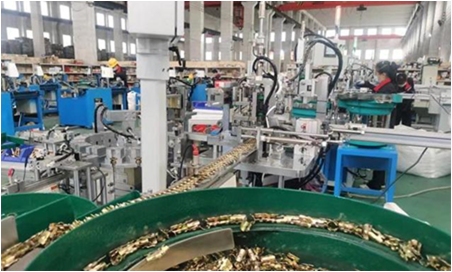Nov . 06, 2024 13:51 Back to list
Anchor Solutions and Fastening Techniques for Reliable Construction Projects
Understanding Anchors and Fasteners Essential Components in Construction and Engineering
Anchors and fasteners play a pivotal role in the world of construction and engineering. They serve as the invisible glue that holds structures together, ensuring stability, safety, and durability. Whether you are assembling a simple furniture piece or constructing a skyscraper, understanding these components is crucial for every builder, engineer, and DIY enthusiast.
What Are Anchors?
Anchors are devices that secure objects to various materials like concrete, brick, or drywall. They prevent movement or displacement and are essential for applications where stability is vital. There are several types of anchors, each designed to suit specific conditions and materials.
1. Expansion Anchors Commonly used in concrete, expansion anchors work by expanding when a screw is tightened, gripping the surrounding material. They are ideal for heavy loads and provide excellent holding strength.
2. Chemical Anchors These involve a resin and a hardener mixed before application. Perfect for situations where traditional anchors may not be effective, chemical anchors bond strongly with the base material and are suitable for both horizontal and vertical applications.
3. Sleeve Anchors A hybrid between expansion and concrete anchors, sleeve anchors can be used in a variety of materials. As the screw is tightened, it expands a sleeve that grips the surrounding material, making them versatile for various installations.
4. Toggle Bolts Typically used with hollow walls, toggle bolts have wings that open inside the wall cavity, distributing the load over a larger area. They are particularly useful for hanging heavy items like cabinets or mirrors.
The Role of Fasteners
Fasteners are the components that hold parts together, providing clamping force to maintain stability. They come in various shapes and sizes, each suited for different applications. The most common types of fasteners include
1. Bolts These are threaded fasteners used with nut pairs to secure components. Bolts are essential for connecting structural elements and are available in various grades to match load requirements.
anchor and fastener

2. Screws Unlike bolts, screws have an external thread that engages the material directly. They are versatile and can be used in wood, metal, and plastic applications.
3. Nails These are the simplest type of fastener and are primarily used in woodworking. Nails provide holding power by physical interference and are especially effective for light-duty applications.
Selecting the Right Anchor and Fastener
Choosing the appropriate anchor and fastener is critical to the success of any project. Several factors must be considered, including the material you are fastening to, the weight of the item being secured, and environmental conditions such as weather or corrosive elements.
1. Material Compatibility Not all anchors and fasteners are suited for every material. For instance, using a concrete anchor in drywall will not yield satisfactory results.
2. Load Requirements Understanding the weight and stress that the anchor or fastener will need to support is vital. It's advisable to err on the side of caution and select hardware rated for a higher load-bearing capacity than you expect to use.
3. Environmental Conditions If the installation will be exposed to moisture or corrosive elements, selecting materials that can withstand these conditions, such as stainless steel or galvanized components, is essential.
Conclusion
Incorporating the right anchors and fasteners can significantly enhance the integrity and longevity of any construction project. Understanding the various types, their applications, and best practices for selection ensures that structures remain secure and safe over time. As both professionals and homeowners engage in construction activities, a solid grasp of anchors and fasteners will undoubtedly lead to more successful outcomes in any building endeavor. Whether it's mounting a shelf, building a fence, or erecting a new framework, these essential components act as the foundation of modern construction, providing the security and stability needed in our built environment.
-
The Ubiquitous Reach of DIN934 in Application Realms
NewsMay.16,2025
-
Exploring Different Bolt Types
NewsMay.16,2025
-
Cracking the Code of Sleeve Anchor Mastery
NewsMay.16,2025
-
Clamp Design Principles,Types and Innovations
NewsMay.16,2025
-
Artistry Inspired by the Humble Anchor Bolt
NewsMay.16,2025
-
A Deep Dive into Screw Types
NewsMay.16,2025


